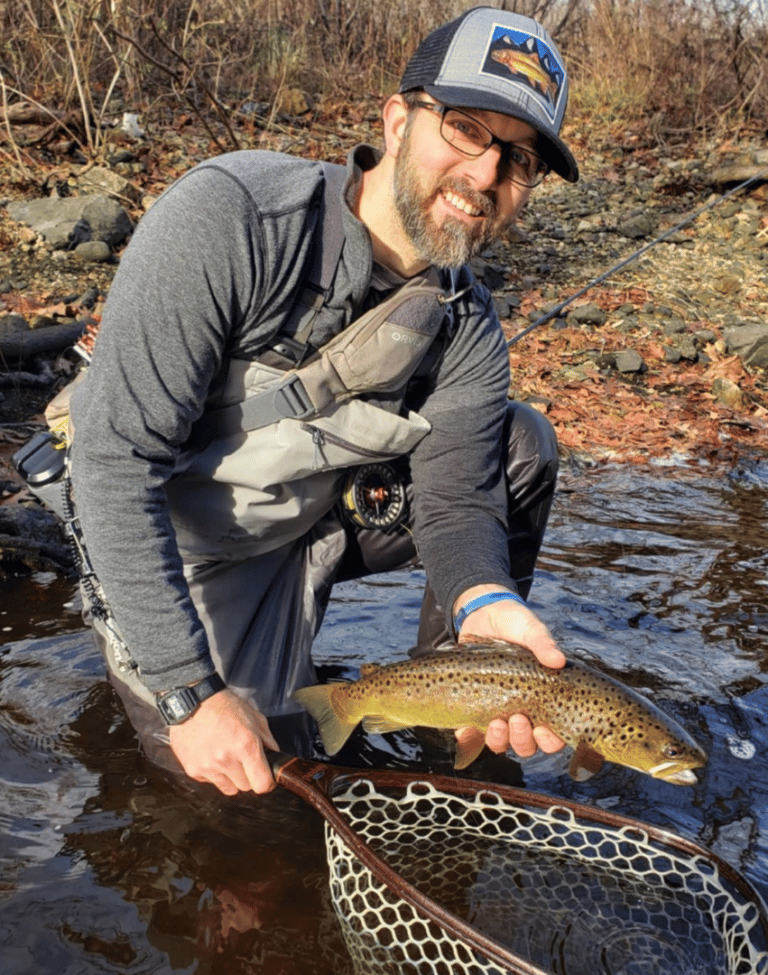Blog Education Trout Fishing Wade Pratt
July 18, 2022
By: Wade Pratt
Wade has been a supporter and ally to United Women on the Fly for the past several years and is a faithful believer in the undeniable axiom that fly fishing is for everyone and no one should be excluded from it for any reason. Based in New Jersey, Wade Pratt is an avid fly fisher and tyer who started fly fishing for saltwater species nearly 25 years ago but has spent the past 7 years completely obsessed with the pursuit of wild trout.
This week Wade discusses gear and fishing tactics for small mountain streams. Watch his full presentation on our YouTube channel.
Gear Tips
- Wear clothing that will help you be stealthy. Colors such as olive, dark green, brown, tan, and gray will help you blend in with the environment.
- Wading boots with rubber soles will help with hiking. Studs may be noisy, but can help a lot with stability on slippery rocks. Avoid felt sole boots, which can transmit bacteria and parasites.
- Small, tightly-woven, rubber nets are best. The fish in these systems are small and may swim through the weave in larger nets. Rubber nets help protect the slime on trout, which protect them from bacteria, fungus, and other infections.
- Rods made from fiberglass or bamboo in the 0 to 3 weight range are the best for these systems. Shorter rods (6’ to 7’6”) help with being able to get into tight spaces.
- Click reels are ideal. A powerful drag is not needed for fishing these streams.
- Lightweight floating line in a natural color with low memory is preferable because the line will be less likely to coil up, helping you to get out a smooth and stealthy cast.
- Short (6 to 6.5 ft, tapered), 5-6x (nylon) leaders are best. Tippet rings can be used to connect nylon tippet to the leader. Pro tip: nylon leader/tippet material is more likely to float, while fluorocarbon is more likely to sink. Using nylon for leader/tippet allows you to easily switch between nymphing and dry fly fishing!
Fishing Tactics
- Stealthy Approach Tips
- Move slowly, quietly, and stay out of the water when possible.
- Stay low– crouch, move on hands and knees.
- Pro tip: waders with padding in the knees can help you stay comfortable when crawling and crouching on rocks!
- Approach from downstream to try and stay in their blind spots. Fish are facing the current. One method for this is to walk downstream and fish your way back upstream.
- Tight Quarters Casting
- Always be aware of your surroundings when casting.
- Bow & arrow, roll, and water loading are all great casting techniques for working in tight quarters.
- Make each cast count! Be patient and precise with your casts to avoid spooking fish.
Huge thanks to the UWOTF Team
Huge thanks to Laura Murph and Shelby Sawyer for transcribing the presentations.




